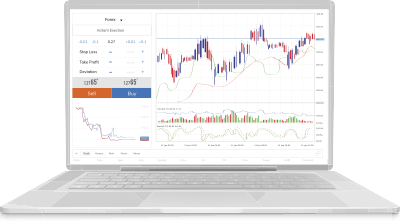In the world of forex trading, understanding the concept of spread is crucial. Spread is a fundamental term that plays a pivotal role in determining the overall cost of your trades and ultimately impacting your trading profits. In this comprehensive guide, we delve into the intricacies of spread in forex trading, shedding light on its significance, calculation, and the factors that influence it.
What is Spread?
Spread refers to the difference between the bid and ask prices of a currency pair in forex trading. It represents the cost of executing a trade and serves as compensation for the broker facilitating the transaction. As a trader, you encounter two prices when dealing with currency pairs:
- Bid Price: This is the price at which you can sell a currency pair. It is lower than the ask price and reflects the market’s willingness to purchase the base currency while selling the quote currency.
- Ask Price: The ask price is the price at which you can buy a currency pair. It is higher than the bid price and reflects the market’s willingness to sell the base currency while buying the quote currency.
Significance of Spread
Spread plays a critical role in forex trading as it directly impacts the profitability of your trades. A narrower spread implies lower trading costs, making it easier to attain profitability, especially for short-term traders who frequently enter and exit positions. On the other hand, a wider spread can erode potential profits and make it more challenging to achieve desired gains.
Calculating Spread
Spread is typically measured in pips, which stands for “percentage in point” or “price interest point.” A pip is the smallest price move that a given exchange rate can make based on market convention. To calculate the spread in pips, subtract the bid price from the ask price:
mathematicaCopy codeSpread (in pips) = Ask Price - Bid Price

Factors Influencing Spread
Several factors contribute to the variation in spreads across different currency pairs and trading environments:
- Market Liquidity: High liquidity currency pairs generally have narrower spreads due to the abundance of buyers and sellers in the market.
- Market Volatility: During periods of high market volatility, spreads tend to widen as market participants seek higher compensation for the increased risk.
- Time of Day: Spreads can fluctuate based on the trading session, with narrower spreads during peak trading hours and wider spreads during off-peak hours.
- Economic Data Releases: Major economic announcements can lead to temporary spread widening as traders react to new information.
- Broker Type: Different brokers offer varying spreads. Some brokers offer fixed spreads, while others provide variable spreads that can change based on market conditions.
Managing Spread Costs
As a savvy trader, minimizing spread costs is essential for optimizing your trading strategy. Here are a few strategies to consider:
- Choosing the Right Broker: Select a broker that offers competitive spreads and aligns with your trading goals.
- Understanding Spread Dynamics: Stay informed about market conditions and be prepared for potential spread fluctuations.
- Timing: Execute trades during peak market hours to take advantage of narrower spreads.
Conclusion
In conclusion, spread is a crucial aspect of forex trading that influences your trading costs and potential profitability. By understanding how spread works and considering the various factors that influence it, you can make informed trading decisions and optimize your overall trading strategy. Remember, a deeper comprehension of spread can empower you to navigate the dynamic world of forex trading with confidence.


